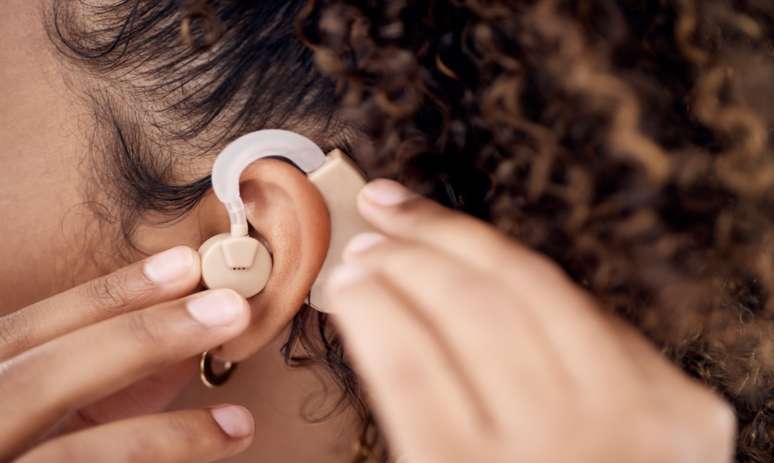Placed through surgery, the cochlear implant is indicated for patients with severe to profound hearing loss.
Hearing is one of the essential senses for the quality of life and also for the autonomy of the individual. Therefore, patients with hearing loss often resort to cochlear implants, an electronic device that helps improve the ability to hear and distinguish sounds.
According to Ariane Gonçalves, audiologist and hearing specialist at AudioFisa Aparelhos Auditivos, there are two types of indications for the use of cochlear implants:
- Adults and children with severe to profound bilateral hearing loss who do not sufficiently benefit from conventional hearing aids;
- People with postlingual (after the development of speech and language) or prelingual (before the development of speech and language) hearing loss.
Surgery to place the implant
The cochlear implant is placed through surgery, usually performed under general anesthesia. According to the specialist, the surgery takes 2 to 4 hours and includes inserting the implant into the inner ear (cochlea), as well as fixing the receptor stimulator under the skin behind the ear.
There are a number of requirements to use the device:
- Detailed medical evaluation, including hearing and imaging tests (such as computed tomography and magnetic resonance imaging);
- Psychological and social assessment to ensure that the patient and their family understand the expectations and commitment required;
- Physical exam to ensure the patient is healthy for surgery.
Furthermore, treatment should be discussed with a multidisciplinary team (ENT, speech therapist, psychologist). Before surgery, it is also a time to adjust and possibly adapt expectations regarding the results of the implant, as well as preoperative guidance on care and procedures on the day of surgery.
How the device works
Ariane explains that the device is divided into two main parts: the external one and the internal one. The external part of the cochlear implant includes a microphone, to pick up sounds coming from the environment; sound processor, to convert sounds into digital signals; and transmitter, to send these signals to the internal receiver.
The internal part is equipped with a receiver-stimulator that receives digital signals from the external transmitter and converts them into electrical impulses. Furthermore, there are also electrodes, inserted into the cochlea, which directly stimulate the fibers of the auditory nerve.
“The sounds picked up by the microphone are processed and converted into electrical signals that are transmitted to the internal receiver. The electrodes stimulate the auditory nerve, sending signals to the brain that are interpreted as sounds,” explains the audiologist.
Postoperative
After surgery, initial recovery may involve mild pain and discomfort at the surgery site, Ariane points out. “-Activation of the implant generally occurs 2 to 4 weeks after surgery, when initial healing is complete. The patient will undergo several sound processor adjustment (mapping) sessions to optimize hearing,” she explains.
According to her, after cochlear implant placement, the hearing experience varies from patient to patient. However, many report a significant improvement in their ability to understand speech.
“Sounds may initially seem mechanical or distorted, but perception tends to improve with time and practice,” says the practitioner.
Additionally, interference such as background noise can be problematic, but modern devices include technologies to minimize these effects.
Ariane also emphasizes the importance of the patient participating in an auditory rehabilitation program to maximize the benefits. “This includes auditory therapy sessions to help the brain interpret new sound signals,” says the specialist.
It is also important to maintain a maintenance and care routine, as the external device requires regular maintenance and specific care, including battery replacement and cleaning.
According to the audiologist, users can benefit from technology updates and new software programs, as cochlear implants are constantly evolving.
“In short, the cochlear implant is an effective solution for many people with severe to profound hearing loss, offering a new opportunity for communication and social interaction,” concludes Ariane.
Source: Terra
Ben Stock is a lifestyle journalist and author at Gossipify. He writes about topics such as health, wellness, travel, food and home decor. He provides practical advice and inspiration to improve well-being, keeps readers up to date with latest lifestyle news and trends, known for his engaging writing style, in-depth analysis and unique perspectives.







-qy1m7p1ozcqa.jpg)
